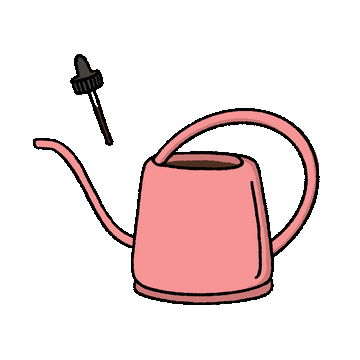Many of us don’t get enough sleep, or sufficient good quality sleep these days. Are you one of those?
There are hundreds of different pills and potions which claim to help folks get a better snooze, but they don’t work for everybody and some can have side effects.
There are also lots of different exercises and activities which are recommended by various punters. Listening to calming music, deep breathing, yoga-style stretches and relaxation techniques. Traditionally a glass of wine or brandy was thought to aid rest, though now we know this is not a great tonic for proper slumber. Although it seems great at first when we first hit the hay, it often causes the dreaded twos and threes – tossing and turning – awake and cranky in the middle of the night, aarrgh!
Lots of folks swear by a nice herbal tea before retiring to bed, and it’s generally agreed that this is a healthy and effective dose for dozing. But did you know that the humble herb’s big cousin – the plant – can assist in getting that elusive superior shut-eye?
Indoor plants have been a staple in the bedroom for a long time. It was hugely popular in the Victorian era (perhaps the peak period for indoor plants!). The most common plants to be found in 19th century boudoirs were Kentia Palms and Maiden Hair Ferns. The latter were especially favoured for bedroom settings as they have that beautifully soft and tranquil looking foliage, so lovely in the corner of one’s bedchamber.
Victorian bedrooms (and other rooms in the house) were often quite austere and stuffy in their layout and décor, but introducing tropical plants could transform a fussy old room into a lush paradise. In the summer time, when the bedroom’s fireplace was not being used, it was filled with smaller indoor plants which formed a miniature vertical terrace garden and hid the dark, drafty hole which wouldn’t be used again until the next winter. Indoor plants -in the bedroom particularly - were displayed with flourish, often in finely crafted brass jardineres proudly perched on handsome mahogany stands. Another form of display was called a ‘Wardian Case’ which was similar to a terrarium.
Victorian people took their indoor plants very seriously; they made sure to tend to them regularly and encouraged the plants to thrive with vigour. They believed that indoor plants in the bedroom were not only aesthetically pleasing, but assisted in getting a good sleep. Gorgeous ferns and heliotropes were considered to be soothing for the soul – an elixir aiding in the relaxation of mind and body. Victorians thought the exotic nature of indoor plants was an alluring and romantic presence in a bedroom, beneficial for setting the mood for a cuddle…
In those days it was also common to take a nap during the afternoon, and this civilised ritual would often take place upon a ‘day-bed’ which lived in a sunny front room, known as a parlour or conservatory. These rooms were choc-a-block with all manner of indoor plants and fabulous flora. This greenhouse-like space was the perfect location for a kip and a re-boot.
Photosynthesis had been discovered as early as the 1600’s, but 19th century citizens really came to think of the process as potentially healing and restorative for humans. The conversion of carbon dioxide into oxygen by plants was definitely an occurrence which was salutary for people to get amongst. We still believe this today, and it’s one of the many reasons people love indoor plants still, in fact more than ever. Furthermore, recent studies have proven that interaction with plants before sleeping does indeed improve sleep quality.
One of the most difficult places to get decent R&R is in deep space. For astronauts, it’s actually not dark and silent out there. It’s often bright, noisy, stressful, and there’s some serious jet-lag (rocket-lag?) to boot. Without normal dawns and sun-sets, the body clock becomes quite out-of-kilter. Sometimes astronauts are sent on a solo mission for a period of time, which can be very lonely for them, leading to low moods or anxiety, which also stalls sleep. To help these cosmic explorers to unwind and maintain better sleeping patterns, indoor plants are always included as an integral element in the design of space stations. Astronauts have reported that the indoor plants in their cabins were a bit like pets, and that they would stare at them before dozing off.
Research shows that us earth bound adventurers also benefit physically and mentally from keeping indoor plants, especially when it comes to catching those crucial forty winks.
Colour and aroma are two of the most important factors in the calming qualities of house plants. Studies have had participants sleep in spaces alongside plants such as strawberry and coriander in laboratories. Their sleeping patterns were monitored and compared against subjects in nearby rooms without plants. It was concluded that the friendly florae significantly benefited the sleep cycles and indeed the emotional well-being of the participants in the verdant rooms. The green colour in plants has a soothing effect. The fragrances aid the body and brain to relax and regulate. The results confirm what has long been held to be true – that there’s a close connection between emotional well-being and satisfying slumber.
Aromatherapy for insomnia is practised using the same principles. It has been shown to improve siesta status.
Other studies have demonstrated that interaction with house plants will assist in reducing cortisol (the stress hormone), reduce the time it takes to nod off (called ‘latency’) and curtail those ‘micro-awakening events’ during your overnight ‘deep sleep’.
Obviously, a sterling sleep results in a new morning feeling refreshed and energised.
The scientists conducting these studies have recommended situating indoor plants in the bedroom for a better night’s rest. Furthermore, they have said that people will gain the most benefits from owning indoor plants, by keeping them in the space where they sleep. It is also suggested that connecting with plants just prior to bedtime, helps set the mood for sweet dreams. Touch them, water them, smell them. This can be part of a meditative routine; a nightly act of mindfulness which will set the scene serene.
With research showing that simply sitting and looking at a pot plant for three minutes can lower blood pressure and reduce anxiety, it seems like a no-brainer to keep a couple of these calming beacons bedroom-side. Whether it’s pro-active interaction with your friendly fern, or perhaps just a passive peace lily in the corner suits you fine – sleeping with plants will improve your nights, and days too.



Leave a comment